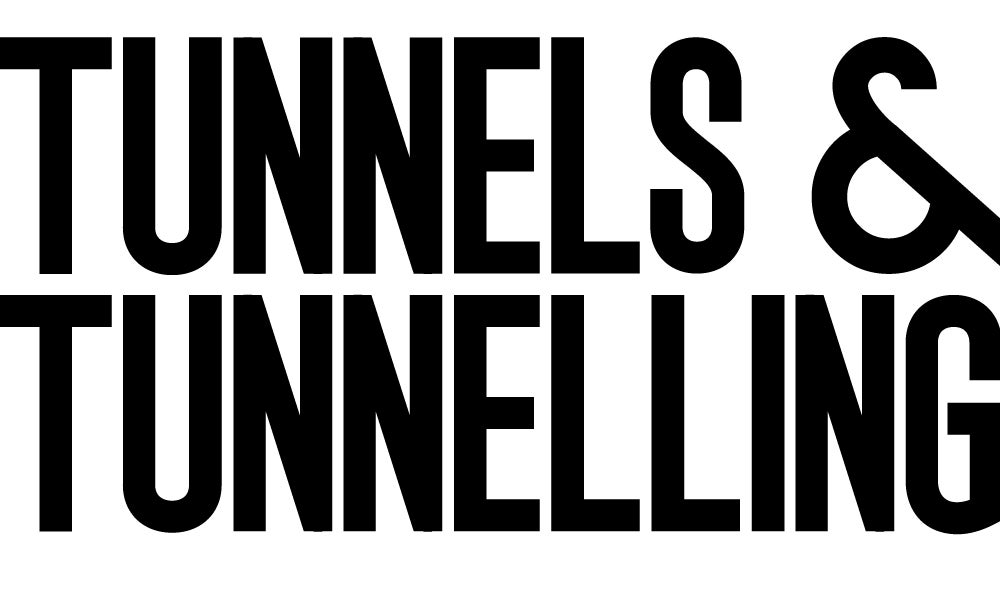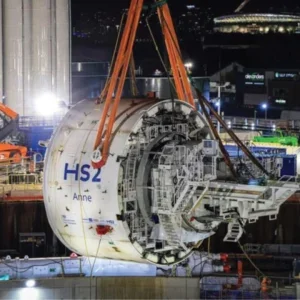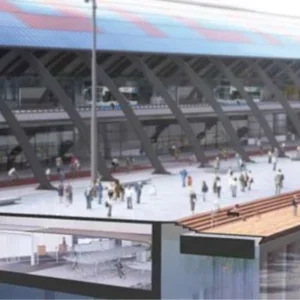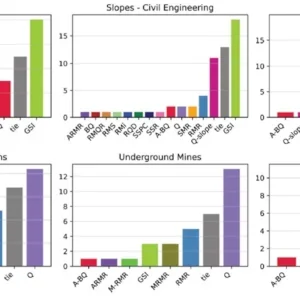Emerging from a French-German funded research initiative, the findings of the U-THREAT project focus attention on finding important ways to increase the resilience of underground transport in preparing to handle safety incidents, in particular evacuation from metro tunnels, due to fire and other major problems.
The research looked at three key areas – operations, structures and users, respectively.
Findings noted that fire incidents, or risk, was prime in the safety concerns for evacuation of passengers in metro systems. However, although much study had been undertaken into evacuation of the travelling public from station platforms, there was notably less research on getting people out of metro trains in the first place, such as stopped in tunnels, and get them to the platforms.
Drawing on data from fire incidents and cooperation with metro owners, the U-THREAT project undertook 3D modelling scenarios to find better ways to support more effective evacuation procedures, such as with facilities, equipment used (including ventilation) and operational systems. Specific risk evaluation was not the aim, for that can only be evaluated on a case-by-case basis, for specific metro networks.
However, on Lyon metro a fire scenario simulation was undertaken for a tunnel evacuation exercise as part of the research, involving 70 volunteers and the local fire service. The onsite research gave numerous valuable insights and recommendations were developed for table-top exercises (see box panel). Additionally, Lyon metro modified its procedures related to handling evacuations from tunnels in instances of fires.
The U-THREAT research project was coordinated by STUVA (contact: Christian Thienert), in Germany, and in France the work was led by the government agency Centre d’Etudes de Tunnels (CETU, contact: Christophe Willmann). Funding for the research was provided by the French national research agency (ANR) and the German national research agency (BMBF).
The researchers tell T&T: “Some of the aforementioned project outputs bring entirely new elements to the existing state of the art of underground public transport network management. Others bring significant improvements to the handling of crisis situations. These outputs have, therefore, logically raised strong interest from the scientific community, operating bodies of such networks and their administrative authorities.”
They add: “Some of the project findings have already been implemented or are due to be implemented by certain operating bodies. For some project proposals, discussions at local and national levels will continue.”
RESEARCH PROJECT
To improve the resilience of underground public transport systems, the research identified a cycle of required activities – prevention, response, resumption and improvement. The research into the cycle began looking at the threats and sub-threats along with development of methodologies to assess vulnerabilities of metro networks in general, but specifically at stations and in the connecting running tunnels.
Partners in the research programme exchanged and shared their experiences, in both France and Germany, according to the three key areas – operations, structures and users. They also produced a list of specific past incidents. It was noted that there were immediate impacts arising from the direct consequences locally to incidents, affecting facilities, but also the potential for significant longer-term impact on the metro system and surrounding transport network connections.
A focus was on practical do-ability to promote resilience while recognising that budgets fund the roll-out of changes, especially over extensive urban metro networks. Conceiving, testing and so developing a method to identify and prioritise vulnerabilities of networks was therefore a vital aim for the research.
The work of the U-THREAT research projects also looked at different scales of incidents and consequent needs, from relatively minor problems and disruptions up to major crisis events. A plan was developed to manage such difficulties, and so handle them. It is structured in four steps – stop, implement, restore and return.
Expanding on these points, U-THREAT says the plan has stages to:
- Stop operations in an organised manner
- Implement appropriate measures
- Restore operations as soon as possible in degraded mode
- Then, move to return to normal operations
The researchers produce a detailed planning system with guidance and checklists to work through each of these stages, including identifying risks that threaten operations, the main aspects of crisis communication, and helpful procedures.
The plan also recommends there is specific focus on the aftermath of any event to properly learn from what happened, and to do so with documentation and a systematic examination of what did and did work and so what can be enhanced for future effectiveness, as part of cyclic improvement.
All of these assessments are looked at through three sequential lenses, as mentioned earlier – operations, structures and users.
Within ‘operations’, software tools were developed to automatically generate contingency plans, reroute traffic and facilitate transition between regular and degraded operating modes. A ‘crisis’ manual was also set up addressing organisational aspects, operational procedures, training courses, training exercises etc.
For the ‘structure’ perspective, a methodology was produced to cope with structural issues after a fire, including damage assessment, structural diagnosis, temporary reinforcement, and safety measures. Moreover, a general methodology for durable repair projects was developed description of typical repairs and techniques employed for common construction materials.
Then, within the ‘users’ study perspective, an ergonomic mock-up of a mobile phone application was developed to help users during the evacuation phase. A study on user evacuation from a train on fire in a tunnel lead to proposals for new tunnel equipment along with significant modifications in procedures, equipment management and route evacuation. A procedure was also set up to avoid loss of/restore user confidence.
Finally, a set of measures was proposed to enhance resilience within the three stage and then assessed in terms of life cycle costs.
Suggestions, of course, included extra and upgraded fire detectors in tunnels and on trains, plus specific light and sounds signals to help guide people to safe evacuation, and also use of the mobile phone app. The focus on phones arose from research literature telling that the quality of real-time communication is a key factor in supporting safety. It is noted that underground metro networks are increasingly becoming equipped with telecom networks to support mobile phones.
Improved technology and software can also support improvements in normal, everyday operations. While they can support recovery after incidents, transport operators are looking for only that – support; they insist that final decisions and choices on system recovery need to be taken by people.






